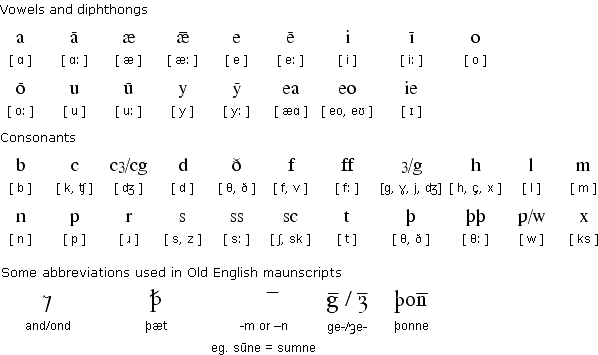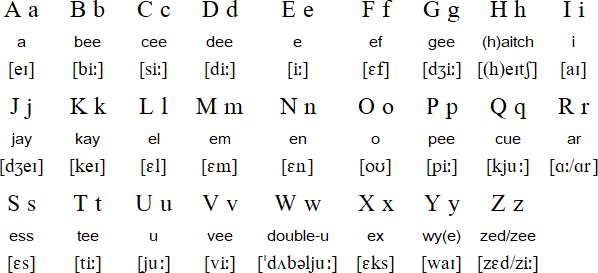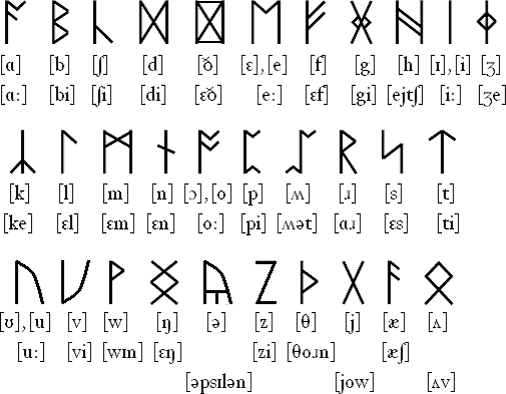

In the English writing system, it mostly represents a vowel and seldom a consonant, and in other orthographies it may represent a vowel or a consonant.

According to some authorities, it is the sixth (or seventh if including W) vowel letter of the English alphabet.
#MIDDLE ENGLISH ALPHABET FREE#
Feel free to investigate their stories, and be sure to study further histories on the mentioned five lost letters of the English language.Y, or y, is the twenty-fifth and penultimate letter of the Latin alphabet, used in the modern English alphabet, the alphabets of other western European languages and others worldwide. There are a few odds and ends of the English alphabet that were not used in entirely official capacities, but are still interesting nonetheless. As time went on, the English language chose instead to use the letter e in place of ethel. Very similar to ash, it possesses a long e sound, such as in the word subpœna. The letter Ethel is probably more recognizable in modern-day as a woman's name, but it's actually based on the Futhark rune of Odal, transcribed as œ. The letter Ash, or, "æ" is named after the Futhark rune ash, and can most commonly be recognized for pronunciation in such words as encyclopedia/encyclopædia. The letter Ash is another lost letter that you've probably seen a few times here and there, more than likely in old church texts. Because of similarities and how Eth and Thorn could sound the same depending on accents, Eth was phased out in favor or thorn. Much like the letter Thorn, it was also created to represent a "th" sound, but more so for words like "thought" instead of "the". Eth (Ð, ð)Įth is a letter that originates from the Irish language. Eventually the alphabet evolved into combining two u's to make our current letter W, eliminating the need for the letter wynn. Wynn was originally created as an adaption from the Latin alphabet for the Futhark alphabet because it lacked a specific letter to fit a "w" sound, something that was heavily used in the English language.

If you look at the original Latin alphabet, you'll realize that it's pretty much the exact same one that we use in present day aside from the stark omission of the letter w. So, the next time you see "Ye Olde Brick Tavern" or something similar in your travels, you'll recognize that it's really just saying "The" after all. Due to most printing presses not having the letter thorn available, it became common practice to use a y instead, leading to "ye". The y is really used to substitute for the letter thorn, derived from the runic alphabet of Futhark, and it's pronounced like "th", as in the word "the". If you've ever seen the word "ye" used in a tavern or on a business sign, as in "ye merry" or "ye olde", the word ye is not actually pronounced using the y sound at all. You're probably quite a bit more familiar with this letter than you might realize.

We learned our letters as children and we forever have the ear-worm of the alphabet song stuck in our heads, but did you know that there were actually a few letters that didn't quite make the cut for our modern alphabet?Īfter Christianity took over a great deal of Europe, the Latin alphabet was introduced, overtaking the previously used runic alphabet and eliminating of few of these interesting letters: Thorn (Þ, þ) Most of us know the English alphabet backwards and forwards.


 0 kommentar(er)
0 kommentar(er)
